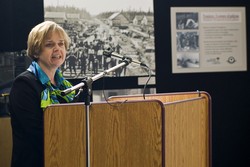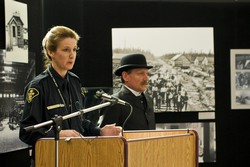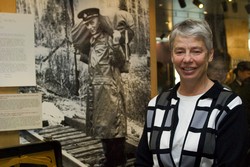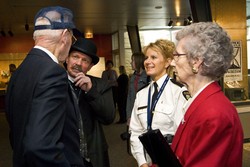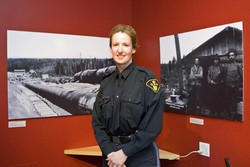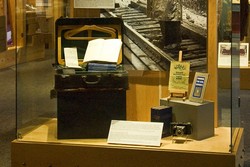Frontiers: A century of policing
The exhibition highlights key moments in OPP history, both early and recent, through a selection of compelling images, artifacts and personal stories which celebrate the last century of the Ontario Provincial Police.
October 13, 2009 marks a significant milestone in Ontario history; a century of policing by the Ontario Provincial Police (OPP). The last hundred years have brought significant social, political, economic and demographic changes to a geographically diverse province. These developments have presented a variety of unique challenges for the OPP.
The OPP has been in the vanguard of many frontiers whether it has been providing policing services for a province four times the size of France, or leading the way in forensic identification, or handling the delicate imperatives of crisis negotiation, or adapting the techniques of criminal investigation to the ever-changing faces of crime.
Historical background
Ontario's frontiers
In 19th-century Ontario, the policing efforts of high constables and municipal police forces had been, more or less, adequate for dealing with crime. Rapid economic and social change at the beginning of the twentieth century meant there was a need for a centralized law enforcement strategy.
The formation of the OPP was a direct response to the province's need to deal with increased lawlessness - an inherent part of frontier development. Frontiers: A century of policing illustrates and celebrates the response of the OPP force, as well as individual members of the police, to policing in often difficult conditions. From the physical hardships of policing in the northern frontiers of Ontario to the complexities of upholding unpopular early liquor laws along the U.S./Canada border or developing new techniques to fight against increasingly sophisticated criminals, the OPP has much to celebrate in the last 100 years of policing such a large and diverse population.
Northern and southern frontiers
One hundred years ago, when the OPP was formed, the province of Ontario was dealing with the effects of population growth and the resulting need for greater infrastructure. In the north, there was rapid expansion in resource development in mining, hydro-electric power and logging, as well as the construction of the railroad. Increased immigration and settlement was the experience both in the remote north and in the rural and urban areas in the south.
The Industrial Revolution brought manufacturing jobs to cities in the south resulting in demographic and socio-economic changes. By the end of the nineteenth century, larger cities in Ontario had established their own police forces to deal with the growth in crime, but rural areas and smaller municipalities were ill-equipped to manage the rising criminal element. Additionally, points along the Canada/U.S. border were experiencing increasing problems with the entrance of illegal aliens and the illicit cross-border trade in alcohol.
Before Ontario
There is a long, complicated history between government agencies and First Nations in Ontario. The early history of Ontario saw northern expansion and land agreements negotiated between Aboriginal peoples and the government. The OPP was formed to deal with the problems that were created by this geographical and settlement growth, problems that included the difficulties of policing the diverse groups of British, Irish, Scottish, First Nations and other diverse cultural populations.
Frontiers puts early policing, as well as the development of the OPP, within the social context of the changes in Ontario over the last one hundred years. Milestones, such as the advent of self-policing within First Nations communities, and the formation of the Aboriginal Policing Bureau are part of this overall history of the OPP.




